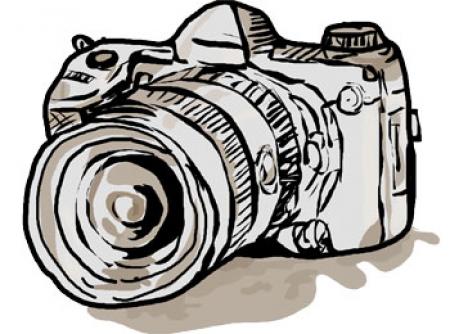Art photography
DIY vs. hiring a pro
Many artists panic when they need to send images of their work to galleries, grant-bestowing bodies or other people with the power to further artistic careers. While painters must have a good eye for composition, that doesn’t mean they know how to work a camera.
The best bet is to turn the job over to a professional photographer. But what if you can’t afford one? UAN talked with Portland art photographer Dan Kvitka about how to get the best images of your art.

What kind of camera do you need?
“The camera doesn’t matter,” says Kvitka. “You can shoot it with a cell phone.” If all you need is a web image, sometimes older technology and lower resolution is better, he says, because not everybody has a computer that’s compatible with giant images.
The lens is way more important than the camera. Kvitka recommends the Nikon 60mm macro or the Canon 50mm macro lens for two-dimensional work.
White balance
White is white, right? Nope. Since light itself is rarely white, different types of light color the objects you’re photographing. For example, an incandescent bulb casts a red/orange light, while sunlight is blue. Properly setting the white balance on your camera prevents the whites in your artwork from looking orange or blue, depending on the light source.
What’s the most common mistake amateurs make in photographing their artwork? “They don’t know how to white balance,” says Kvitka. “I’ll give you the best tip in the world. Google. Type in the name of your camera, and ‘how do I make a custom white balance.’” Then white balance your camera to your room light.
Shooting on a tripod
Use a tripod. And make sure the artwork is level. In fact, if you don’t already have a level, buy one at the hardware store. Set up your tripod so the artwork fills almost your entire camera view. But don’t get so close the image is distorted. Close down the aperture to 16 so you have a decent depth of field.
What kind of tripod do you need? “Buy the best one you can afford,” says Kvitka. While some of his tripods cost more than a thousand dollars, you can find an adequate used one for much less. “Old, heavy, aluminum tripods do a great job.”
2D vs 3D
Two dimensional art is easier to photograph than 3D, because you can simply pin it to the wall. Sculptures and other 3D works require a set.
Most professional photographers use soft boxes, which work by diffusing light through a layer of material for a soft, even lighting effect. A tabletop soft box is ideal for photographing your small pieces of sculpture or jewelry.
For an inexpensive, DIY background, Kvitka recommends buying a piece of seamless paper or illustration board to create a sweep from a table top up a wall. You want a non-distracting background so the focus is on your art.
Shooting RAW
RAW is a file type that saves your image without compressing it into a smaller jpeg file. This means all the data is saved, which may come in handy later, depending on what you’re going to do with your photos. RAW keeps your color more accurate and allows you to present much larger images than you can with a jpeg. If you’re serious about photographing your own art, Kvitka recommends shooting RAW and editing your images in Photoshop.
When to go with a pro
The problem with photographing your own art is that the equipment is expensive. And after you buy it, you still have to develop your skills. “To do it well costs a fortune,” Kvitka says.
Kvitka was an artist for 25 years. He learned how to photograph art by taking photos of his own work, and shooting for his artist friends. Ten years ago he decided to focus on being a full time photographer. And he is very busy. Many artists find that in the long run it pays to use a pro. Kvitka charges about $25 per 2D image and $35 per 3D. Shooting jewelry or works behind glass costs more.
Whether you take the time to develop your photography skills or decide to hire a photographer, Kvitka stresses the importance of professional-quality images if you want to compete in the real art world.
Contact Dan Kvitka through his website http://www.kvitkaphotography.com/ or at dankvitka@gmail.com